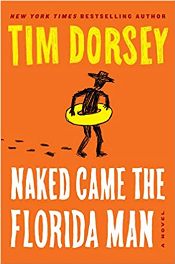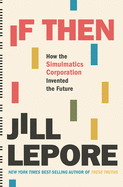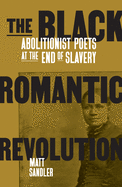 |
| (photo: Logan Rice) |
Rob Bell is the author of 10 bestselling books, including Love Wins, The Zimzum of Love and What Is the Bible? He hosts a weekly podcast, the RobCast, and regularly runs workshops addressing the big questions of life. Everything Is Spiritual (St. Martin's Press) is his exploration of how the personal journey of each human being ties into the life of the cosmos. Bell lives in Los Angeles with his wife, Kristen, and their three kids.
Tell us about the process for writing Everything Is Spiritual.
I had done several speaking tours about this material. They were about the massiveness of the universe--quantum physics, 13.8 billion years of expansion--and how growth, personal evolution, becoming a better person, is also somehow about expansion. What we're learning about the universe and how a human being grows kept merging.
I was getting ready to write my next book, which was going to be another round of Big Ideas, about how mysterious everything is. But it had a certain flatness to it, and I started to wonder: Where do these ideas come from? Why do I have this deep, abiding sense of exploration about life? Why does everything just keep getting more interesting? I started going back to the ideas and wondered: Where did I first come across that? What was it like when I first stumbled into that? That book became a memoir of ideas and personal evolution. It started to become about me, but also about everyone. And I did not expect the quantum physics! But it's in there.
The book is not exactly linear, but it does trace your journey from curious teenager to megachurch pastor to a man who's seeking and building something new. How do you think your story will resonate with readers?
Obviously, my work and life has had this strange public dimension. In my late 20s, I had the sense that my job was to grow in public, and to follow that growth where it led. In any system--academics, business, government--there's going to be the rules, the sense of "This is how it is," whether spoken or unspoken. [Instead,] my wife, Kristen, and I just kept following this sense of inner guidance, what I call Spirit in the book. The book did something really profound to me, and heart-expanding. It invited me to own every square inch of my own story: all the aches, all the losses, all the times I felt like I was falling down a flight of stairs. The memories leaped out at me and raised as many questions as answers.
There are sections of the book where I tell about different events that were happening at the same time, almost like constellations of events. Its structure is looping and swirling back on itself. In a literary sense, that's what got me excited. I was anticipating the reader who would say Wait, you left a lot of stuff out. We all do that. There are periods of a couple years where I don't remember much, and then there'll be a nine-month period that's a constant fireworks show of euphoria and heartbreak.
The book emphasizes connection: between people, between atoms and animals and the different parts of the universe, the idea that all of it is interconnected and sacred.
Yes. For example: I remember wrestling with the question of how we know what we know, and came to the conclusion that you shouldn't ever talk about something publicly that you haven't experienced. If you've experienced forgiving someone who hurt you, you can talk about that. The only person who can actually help is the person who's honest about that experience and can speak with a certain humility. So I began to see that the particular is how you find the universal. The personal is how you make your way to the cosmic. Whatever you're going to say about the divine, whatever you can know about such mysteries, you will get to it by going through your humanity, instead of around. I think that's one of the things I said nine times in the book. [laughs]
The book, both in form and content, keeps setting a pattern and then growing beyond it.
I hope, with the book, there's a depth and a looseness that are dancing with each other. I came from a very rational, linear world where people said, This is how it is, and from the beginning I was like, This thing [life] is already bursting out of its form. The forms are helpful, but then you burst out of them, or outgrow them. That's one of the other 19 things the book is about. It appears to celebrate its own inconsistencies.
When people actually talk about how their life has gone--the nudges, and the hunches, and the synchronicities--it never fits within the spirituality systems that would say This is how this unfolds. I'm exploring how we might more accurately talk about how life actually unfolds, which means you're in some very interesting literary territory.
What do you hope the book inspires readers to do?
Part of the book is simply inviting people to own every square inch of their personal history. That history probably has all sorts of things to show you and enlighten you. And it leads you to more questions: How can we keep on living?
Sometimes it feels to me like cynicism is the god of the age: all the ways that life has let everybody down, broken their hearts, promised something it didn't deliver. There's one route that sort of papers over all these ruptures: you can pretend everything's fine, work out a little more, go after your goals. And there's a different route that leads to cynicism and despair. Then there's this giant question sitting in the middle of the world: Can you have wonder and awe with your eyes wide open? Can it keep getting more interesting? Can all of this be done with a looseness, and a lightness, and a joy, but real? Something that doesn't ignore all the grief and pain, but makes space for it?
It's all connected--the grief and joy--and you're inviting readers to embrace all of it.
Yes. I want people to know: You can leave. You can heal. You can acknowledge all of it. You can be grateful for what there is to be grateful for, and you can find new paths forward. You can find wonder and awe.
We know that there is a relationship between grief and imagination. Whatever your plan was, it fell apart, so you have to come up with a new plan. So there are seeds of imagination that get planted, because you have to figure it out. We are experiencing this tremendous loss right now with the coronavirus pandemic: jobs, life, plans, futures. But we are going to see new things in this new world we're headed into together. There's going to be an explosion of new. This is our first shot at this new world, right? I want people to know: you're learning. You'll probably always be learning. But there are things you'll learn, and then you can trust those things. --Katie Noah Gibson
 At the beginning of Cat Tale (Hanover Square, $27.99), journalist Craig Pittman warns, perhaps unnecessarily, "This being Florida, there's going to be some weirdness sprinkled into this tale." Pittman entertainingly recounts the misfortunes of Florida's official animal--endangered by over-development, ignorance and just plain stupidity--and the efforts of the Florida men and women who set out to save the Florida panther from extinction.
At the beginning of Cat Tale (Hanover Square, $27.99), journalist Craig Pittman warns, perhaps unnecessarily, "This being Florida, there's going to be some weirdness sprinkled into this tale." Pittman entertainingly recounts the misfortunes of Florida's official animal--endangered by over-development, ignorance and just plain stupidity--and the efforts of the Florida men and women who set out to save the Florida panther from extinction. Naked Came the Florida Man (Morrow, $27.99) is the 23rd in Tim Dorsey's Serge Storms series. You don't have to read the previous books to enjoy this rollicking tour of Florida as Serge and his sidekick Colman untangle a mystery involving cemeteries, rodeos, high school football and a monster haunting a sugarcane field in their delightfully nihilistic, occasionally sociopathic style.
Naked Came the Florida Man (Morrow, $27.99) is the 23rd in Tim Dorsey's Serge Storms series. You don't have to read the previous books to enjoy this rollicking tour of Florida as Serge and his sidekick Colman untangle a mystery involving cemeteries, rodeos, high school football and a monster haunting a sugarcane field in their delightfully nihilistic, occasionally sociopathic style. In 2016, journalist Kent Russell and a couple of his pals attempted to re-create the 1,000-mile walking campaign of Senator Lawton Chiles in 1970. The result is In the Land of Good Living: A Journey to the Heart of Florida (Knopf, $26.95), a chronicle of Russell's uneasy relationship with his native state, a place he calls "Hothouse America, a microcosm or synecdoche of the larger nation." Shelf Awareness's reviewer wrote: "If Hunter Thompson and Joan Didion had produced a literary offspring, a young man whose older brother was Bill Bryson, his writing might sound something like Kent Russell's."
In 2016, journalist Kent Russell and a couple of his pals attempted to re-create the 1,000-mile walking campaign of Senator Lawton Chiles in 1970. The result is In the Land of Good Living: A Journey to the Heart of Florida (Knopf, $26.95), a chronicle of Russell's uneasy relationship with his native state, a place he calls "Hothouse America, a microcosm or synecdoche of the larger nation." Shelf Awareness's reviewer wrote: "If Hunter Thompson and Joan Didion had produced a literary offspring, a young man whose older brother was Bill Bryson, his writing might sound something like Kent Russell's." Carl Hiaasen skewers the denizens of glitzy Palm Beach--who include POTUS and FLOTUS--in Squeeze Me (Knopf, $28.95). Sex, scandals, a missing widow, a wildlife wrangler and a lot of Burmese pythons (a real thing in Florida) will have you giggling all the way to the polls to mail your ballot.
Carl Hiaasen skewers the denizens of glitzy Palm Beach--who include POTUS and FLOTUS--in Squeeze Me (Knopf, $28.95). Sex, scandals, a missing widow, a wildlife wrangler and a lot of Burmese pythons (a real thing in Florida) will have you giggling all the way to the polls to mail your ballot.


















